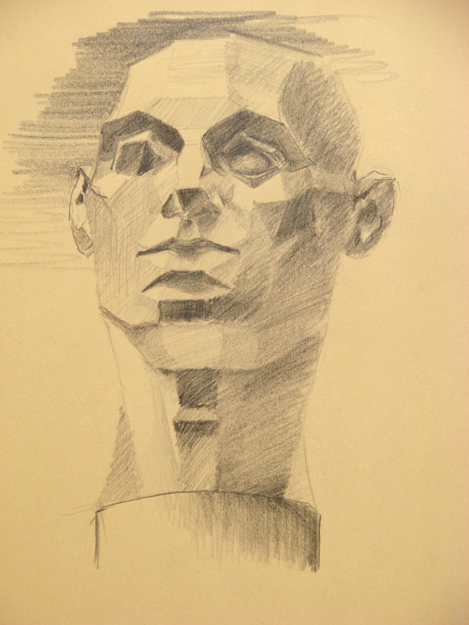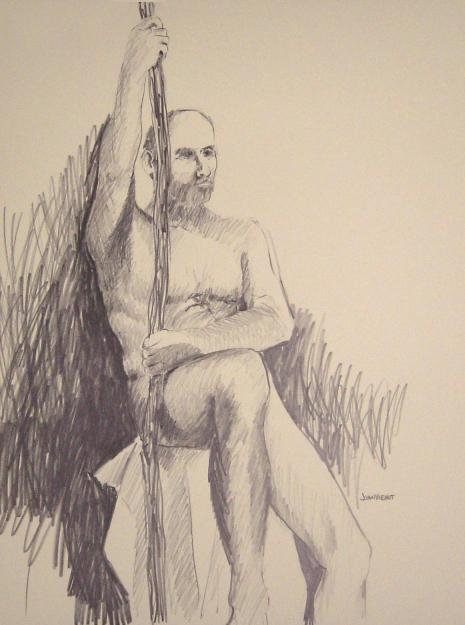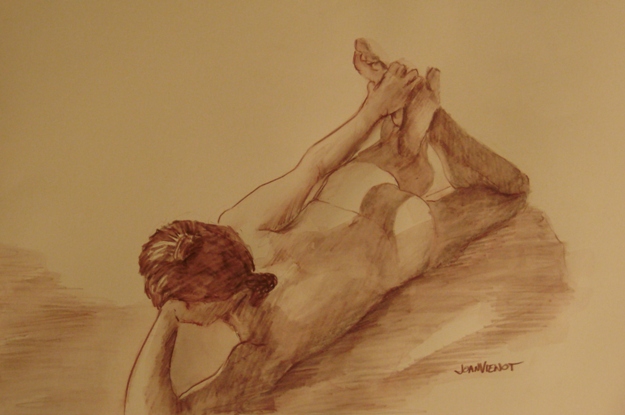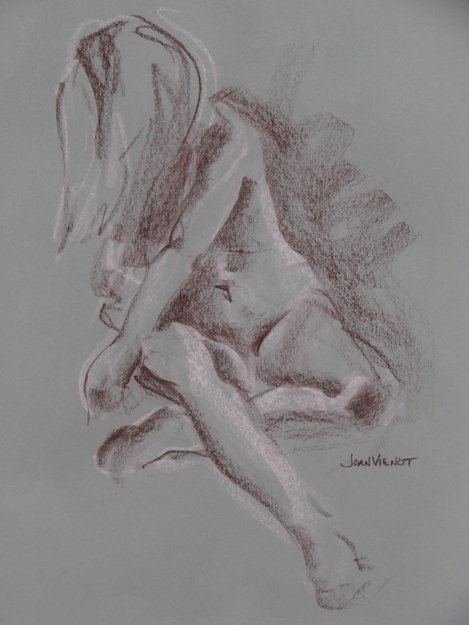One of the points of blogging about my art is to show my struggles, my occasional two-steps-backwards, as well as my one-step-forward. So I bravely display my struggling efforts towards gaining some competence with portraiture. I attended an open studio session today, to practice drawing a face. The model stayed in the same pose throughout the 3-hour session, taking 5-minute breaks every half-hour or so. I think that drawing “Plane Man” two days ago helped me to see form, highlights, and shadows. I used the first half-hour to warm-up, using nupastels to make a full-color sketch.
 Then I settled in and spent the next 3 segments using a soft graphite on Canson Rives paper that Charlotte gave me to try out. I’ve used Canson Edition, and I liked Canson Rives even better. Tooth is a texture in the paper that “grabs” onto the media, and makes it easy to make marks. The tooth on the Rives paper was excellent, and one side had more texture than the other. I nearly finished the drawing at left. There are some obvious problems, places that actually make me wince as I review it, like the white line showing the leading edge of her neck, which grows strangely out of the reflected light under her chin. I will have to work on that some more. And I doubt anyone would recognize the model from my drawing, since I made her face, and especially her eyes, too narrow. But I did do a fair job of suggesting her beautiful dreadlocks.
Then I settled in and spent the next 3 segments using a soft graphite on Canson Rives paper that Charlotte gave me to try out. I’ve used Canson Edition, and I liked Canson Rives even better. Tooth is a texture in the paper that “grabs” onto the media, and makes it easy to make marks. The tooth on the Rives paper was excellent, and one side had more texture than the other. I nearly finished the drawing at left. There are some obvious problems, places that actually make me wince as I review it, like the white line showing the leading edge of her neck, which grows strangely out of the reflected light under her chin. I will have to work on that some more. And I doubt anyone would recognize the model from my drawing, since I made her face, and especially her eyes, too narrow. But I did do a fair job of suggesting her beautiful dreadlocks.

There was one last 30-minute segment left in the session, and I used that time to start a drawing of her profile, from just a few feet away. I started with the white highlights, allowing the paper to show through for some of the midtones, and then I used a reddish-brown tinted graphite pencil to create the darker values. But I didn’t even get to start on her hair before it was time to pack up. If I finish this drawing, then I will decide whether to darken or wash out the graphtint for effect or to improve the representation. Graphtint is a fun pencil, not as “washable” as a watercolor pencil, but able to be washed somewhat, to create a more watery effect which can be much softer than the pencil strokes alone. It brightens the color when wet. My apologies for the orange tone of the piece — it’s not orange at all, but rather a light brown.







































